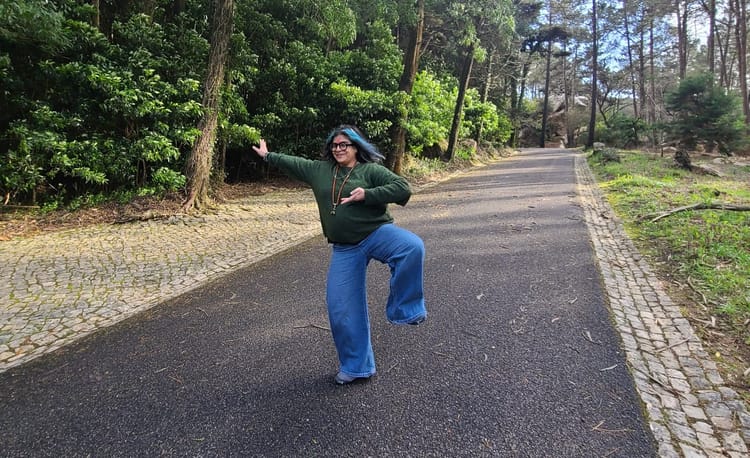What I learned from "client" break ups
I do not see posts from fellow therapists talking about failures and rejections. After all, in our professional world, we have to come across as successful to attract “clients or customers*”. My particular approach is different. My social media presence and work have always centered authenticity over success, and talking about my failures is a part of that.
In the last three weeks, I have had two people break up with me as their therapist. I was sad. For a short while, I felt insecure about my skills. You are not a good therapist, I heard a voice in my head. Intellectually I know that I am not the best therapist for everyone, yet emotionally it can be hard to make peace with the self-criticism that crops up.
The benefit of having practiced mindfulness for a long time is that my compassionate response is almost automatic. What would have taken me days to process took me minutes to transform.
Here is how I held space for myself both times:
- I dropped into my body, connected with my breath. I noticed that I was not breathing and I had tightness in the pit of my stomach.
- I named the feeling(s) - sadness, doubt, insecurity.
- I reminded myself of the wisdom that thoughts and feelings are like clouds in the sky. They are not permanent. “This is an experience of insecurity” vs. “I am insecure.”
- I practiced self-soothing touch by placing my hand comfortingly over my abdomen and staying present with my breath and sensations for a while.
Soon the intensity and urgency I felt passed. As the feelings changed, I became aware that I was relieved that they had chosen to break up with me. I was proud of them for standing up for themselves. I wished for them to find aligned professionals to support them in their journey.
I reflected on the relief I felt. What was common in these two situations? Both of them had approached me for the same therapy. In my assessment, they were not suited to that therapy^. But both of them had gone through a lot in their lives, in therapy, and said that they had really wanted this. I went against my better judgment and agreed to offer it. While I am trained in this therapy and have used it successfully several times with different folks, I would not say I am an expert, or this is the only modality I work with. My work centers Buddhist wisdom, compassion, mindfulness, and personal practice.
My thoughts shifted to others who had stopped coming to therapy. A few years ago, I had a person drop out after one session. I was surprised because they had some interesting results with a particular modality, and then did not come back. I shared during our peer supervision circle that I felt I had gone too fast with them. While they were spiritually ready for the deep work, they were not emotionally ready to confront some things that came up for them. It reminded me of how I showed up with another individual. They had done a lot of personal work through therapy, study, and reflection, so I had chosen a fast pace with them too. I was grateful when they shared in the next session that they wanted to go slower.
I was curious about what was showing up for me in these situations. It dawned on me that the part within me that had thrashed around for healing for decades was getting activated when I met therapy participants who were deeply traumatized. Their urgency activates this (my) part’s urgency. I felt a surge of compassion for this part. I am proud that I can be deeply empathetic because I can provide support in a way people may not have received before, and I am learning that I need to be aware when this part crops up. A value that mindfulness inculcated in me has been slowness and I realized that with some peeps, I had overridden it because of what came up for me.
I felt some fleeting guilt about abandoning my practice values and also remembered that value-based living is not without its challenges. In my early years as a private practice therapist, I had no boundaries with whom I took on as therapy participants. I felt guilty about charging money so I let people pay me whatever they felt like, and sometimes people paid me $30. I was not even making my office rent. It was my journey with mindfulness that helped me clarify my vision, and make a values statement to guide me. After consulting peers, I also created a sliding scale that worked for me. My practice shifted and most of the time only those that were fully aligned came through the virtual doors of my practice.
I had never reflected on why some people stopped coming to therapy because it was rare. My retention rate is quite high actually. I had this reflection because two lovely souls chose to communicate clearly with me in quick succession. I am grateful; it has renewed my commitment to my practice values. I made the decision that I will no longer be offering this modality because I do not enjoy facilitating it. I am proud of myself because this is currently a popular modality in trauma healing and I too have benefitted from it as a therapy participant.
I am going back to the basics of why I am in the therapy and coaching space.
I am committed to:
- Communicating that my style centers on fostering a relationship with oneself through compassion and mindfulness
- Setting the expectation that the process will be slow while acknowledging the urgency they feel
- Connecting with my erstwhile traumatized and now healed part and giving them their flowers
I know I am on the right track with my journey as a therapist because I also onboarded two new clients this week with whom I discussed my practice values and process. Both of them were keen BECAUSE of what I had shared. It led me to realize that I had participants with even tougher circumstances who have stayed the course because of my authenticity, commitment to decolonized mindfulness practices, and creativity when it comes to applying therapeutic modalities to atypical situations.
Here is what I am taking away:
- I will make mistakes, despite my best intentions.
- I can cope with feedback constructively and compassionately.
- I am discerning about what is mine to own, and what is meant to be released.
- I can trust my ancestral wisdom. I do not need to center trending modalities.
This is my authentic accountability share. I look forward to working with you as a therapist/coach.
Explanation of terms:
- * Clients/customers: Inspired by Jennifer Mulan’s work in Decolonizing Therapy, and my experience in the dementia support space, I am going to use the term participant which acknowledges an individual’s self-determination and a horizontal structure dismantling the therapeutic heirarchy
- ^ In my assessment, they were not suited to that therapy: Therapy is subjective and this was my professional opinion, and I acknowledge a participant’s right to receive a therapy they feel is right for them, for which they can seek services with someone more aligned


Member discussion